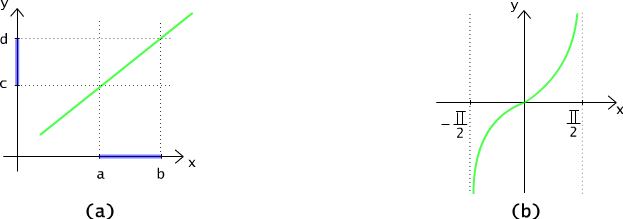
| « previous section | next section » |
We say that a set is finite, if the number of its elements amounts
to
n, where n is a natural
number. When two finite sets have the
same number of elements we say they have the same power, or that they
are equipotent.
The concept "the same number of elements" ceases being intuitive if it applies to infinite sets. For example, let's consider two sets: the set of natural numbers and the set of all natural numbers greater than 100. Do they have "the same number of elements"? There are several elements in the first set that do not belong to the second set. Is it important?
Observe that, when two finite sets store the same number of elements
then we may
determine a one-to-one function which transforms one set
onto the other one (i.e. we can construct a bijection). This function
can be created by
building separate sequences of
elements of both sets and ascribing the i-th element of the first
sequence to the i-th element of the second sequence (see lecture 3).
The
existence of a bijection from one set to another
intuitively illustrates the problem of sets equipotency: yet,
using this function we paired all sets' elements in such
a manner that every pair's predecessor belongs to the first set and
every
pair's successor belongs to the second set and moreover each sets'
element appears
exactly once.
Definition 9.1.1
Two sets are equipotent if and only if there exists one-to-one function from one set onto the other one. Fact that sets A and B are equipotent is denoted by A ~ B.

Fig. 9.1.1 (a) Function establishing the equipotence of the sets of circles and squares. (b) Function establishing the equipotence of sets of even and of natural numbers.
Example 9.1.1

Fig 9.1.2 (a) The function which determines equipotence of intervals [a,b], [c,d]. (b) Trigonometric tangent function which determines equipotence of the set of real numbers and the open interval (-pi/2, pi/2).
Question 9.1.1 Give a function which establishes equipotence
of
the set N and the set N\{0,1,2,3,...,100}. Write down the
simplest possible correspondence.
Lemma 9.1.1
For any sets A, B, C,
(1) if A ~ B then B ~ A,
(2) if A ~ B and B ~ C then A ~ C.
Proof.
Ad(1) If A ~ B then there exists a one-to-one function form the set A onto the set B. According to the definition (see section 3.3) there exists its inverse function, which is a bijection form A onto B, that is B ~ A.
Ad(2) Providing that the first assumption (A ~ B) is satisfied there exists bijection f : A → B. According to the second assumption (B ~ C) there exists bijection g: B → C. Because the composition of the functions f and g, f ° g, is a bijection which maps the set A onto the set C (see Lemma 3.3.2), therefore A ~ C. ♦
Now, using lemma 9.1.1, we prove a bit surprising theorem that all real numbers "can be fitted" into a freely small interval of real numbers.
Lemma 9.1.2
Any open interval of real numbers and the set of real numbers are equipotent.
Proof.
In order to achieve our goal we use functions described on the Figure 9.1.2. Firstly, the tangent function is one-to-one correspondence which maps the open interval (-pi/2, pi/2) onto R. That is (- pi/2, pi/2) ~ R. Furthermore, the linear function, described on Figure 9.1.2(a), allows to project any open interval e.g. (a, b) where a < b, onto the interval (-pi/2, pi/2). Hence (a, b) ~ (- pi/2, pi/2). Hence, according to lemma 9.1.1, the sets (a, b) and R are equipotent. ♦
Question 9.1.2 Are the sets X = { x ∈ N: 0 ≤ x<10 } and Y = { x2 : x ∈ N and x is even number less then 20} equipotent?
| « previous section | next section » |